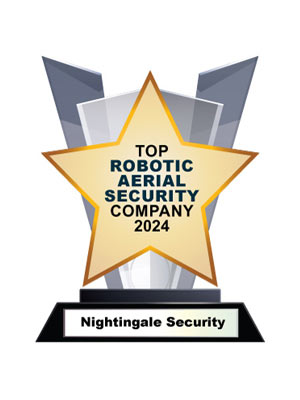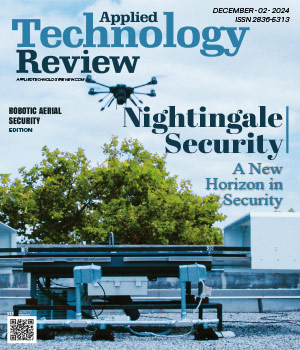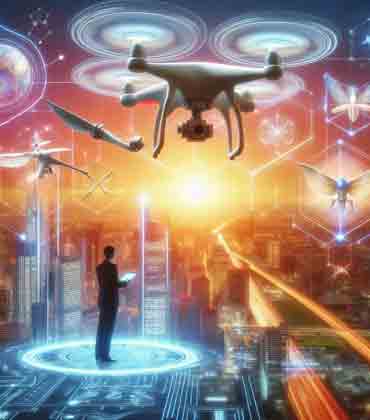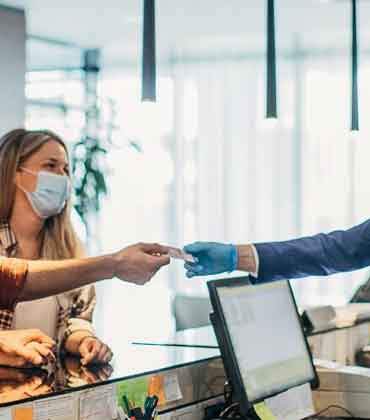THANK YOU FOR SUBSCRIBING
Applied Technology Review: Specials Magazine
When the line between safety and vulnerability blurs in the blink of an eye, first responders rise to the challenge, braving chaos to protect lives and property. But even the most dedicated teams have their limits-distance, availability and safety concerns can hinder effective action. What if the next evolution in safety didn’t arrive in an emergency vehicle? Nightingale Security is bringing this possibility to life. Its autonomous aerial security systems redefine rapid response by merging speed, foresight and precision. Intelligent drones provide real-time surveillance when human presence isn’t feasible, covering vast areas swiftly and ensuring no critical angle goes unmonitored. The drones serve as powerful force multipliers, enhancing the effectiveness of security teams and integrating into operations across commercial facilities, critical infrastructure, educational institutions and emergency response scenarios. “Just as physical security is a team sport, our technology unites the right players, expertise and technology, through our drone as first responder (DFR) capabilities. This synergy delivers a level of security that transcends the limits of traffic or terrain,” says Jack Wu, CEO. Nightingale’s drones also work harmoniously with a network of advanced sensors and systems. Motion detectors, thermal cameras and other smart technologies act as the eyes and ears on the ground, instantly triggering drones to respond to potential threats. This integration creates seamless coordination between Nightingale’s autonomous aerial systems and the broader security infrastructure, delivering a unified, efficient, responsive and safe network. Reflecting on the importance of these advancements, NYPD Interim Commissioner Donlon notes, “We are at the forefront of these exciting innovations today, and we must always keep seeking out the benefits of new and improving technology. DFR program is part of this evolution. It enables our highly trained officers to be even more responsive to the people we serve and to carry out the NYPD’s critical work in ways that are increasingly effective, efficient and safe for everyone.” Ever-Vigilant, Ever-Ready With an alarm or 911 call, the autonomous threat response system activates, dispatching a drone within seconds. Live video is streamed directly to the security team, providing immediate access to critical information like suspect descriptions, vehicle movements and potential hazards. Real-time insight allows responders to understand the situation before they arrive, enabling quick and effective action. “Saving time means saving lives. It’s not just about getting eyes on the situation quickly but arriving with the information needed to act decisively. Often, the mere presence of a drone serves as a deterrent, signaling to suspects that their actions are already under surveillance,” says Jack. The advantage is particularly vital in active shooter incidents. Integrated with gunshot detection systems, DFR drones provide law enforcement with an aerial perspective to assess the scene before entry, enhancing safety for both officers and civilians. In fire emergencies or mass casualty events, drones offer aerial views that identify injuries, vehicle damage and other hazards. They scan buildings to pinpoint individuals needing rescue and send emergency teams directly to their locations. This capability has become an integral part of modern crime-fighting strategies. “This is now part of our crime-fighting apparatus, and it is truly a game changer,” says NYPD Deputy Commissioner of Operations Kaz Daughtry.
CXO INSIGHTS

The Future of Human Interaction with Consumer Electronics: Meeting the Sensor Needs
Neomar Giacomini, Industry Partnerships - Advanced Development and Innovation, Whirlpool [NYSE: WHR]

How Bowen Is Using Mixed Reality To Change The Design And Construction Process
Jared Redelman, Director of Project Controls & VDC, Bowen

Tackling Cybersecurity Challenges With Innovative Solutions
Humphries, Vice President And Chief Information Security Officer, Mastec

Walking The Sustainability Walk: The Case For Epr
Brian King, Evp Marketing, Product Management And Sustainability, Advanced Drainage Systems
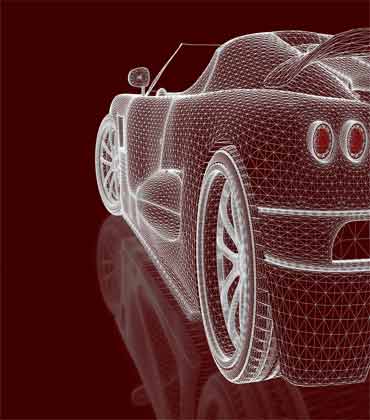
Navigating The Landscape Of Retail Project Management: Strategies For Success
T.J. Mckeever, Project Manager, Brixmor Property Group
IN FOCUS
AI Drone Technology: A Game-Changer for Businesses
With the help of artificial intelligence, drones can now operate with improved functionality and overcome previous limitations, ultimately enhancing safety measures. Additionally, they offer unique aerial perspectives that can change our perception of the environment.
Revolutionizing Modern Surveillance And Protection
The field of security and surveillance has undergone a profound transformation in recent years, driven by the convergence of robotics, artificial intelligence (AI), and advancements in unmanned
EDITORIAL
The Rise of Robotic Aerial Security
In an era defined by rapid technological advancement, security is taking to the skies. Robotic aerial security systems, commonly referred to as security drones, have moved from speculative fiction into tangible, transformative reality. These systems, equipped with cameras, sensors, and even AI capabilities, are revolutionizing the way industries, governments, and communities think about safeguarding their assets and people. But like any groundbreaking technology, this innovation brings both promise and potential pitfalls. Robotic aerial security systems are redefining surveillance by addressing the limitations of traditional methods. Stationary cameras and human patrols, while effective, are restricted by physical and logistical constraints. Drones overcome these barriers with their ability to navigate diverse terrains, access hard-to-reach areas, and provide real-time, high-resolution monitoring over vast spaces. They excel in sectors such as critical infrastructure, event security, border control, and even disaster response, offering a bird’s-eye view of situations as they unfold. Beyond mere observation, many drones are now equipped with advanced AI-powered analytics. These systems can detect unusual activity, identify individuals through facial recognition, and even predict potential threats based on behavioral patterns. This proactive approach has the potential to not just respond to security breaches but to prevent them altogether. Drones bring unparalleled cost-effectiveness to the table. They reduce the need for extensive manpower and expensive static surveillance systems. In large-scale operations like monitoring oil pipelines, solar farms, or agricultural lands, drones can cover more ground in less time and with greater precision. This efficiency extends to emergency situations, where drones can assist in search-and-rescue operations, deliver essential supplies, or assess damage post-disaster, often saving lives and resources. In this edition, we have featured Nightingale Security. Its autonomous aerial security systems redefine rapid response by merging speed, foresight and precision. Intelligent drones provide real-time surveillance when human presence isn’t feasible, covering vast areas swiftly and ensuring no critical angle goes unmonitored.



